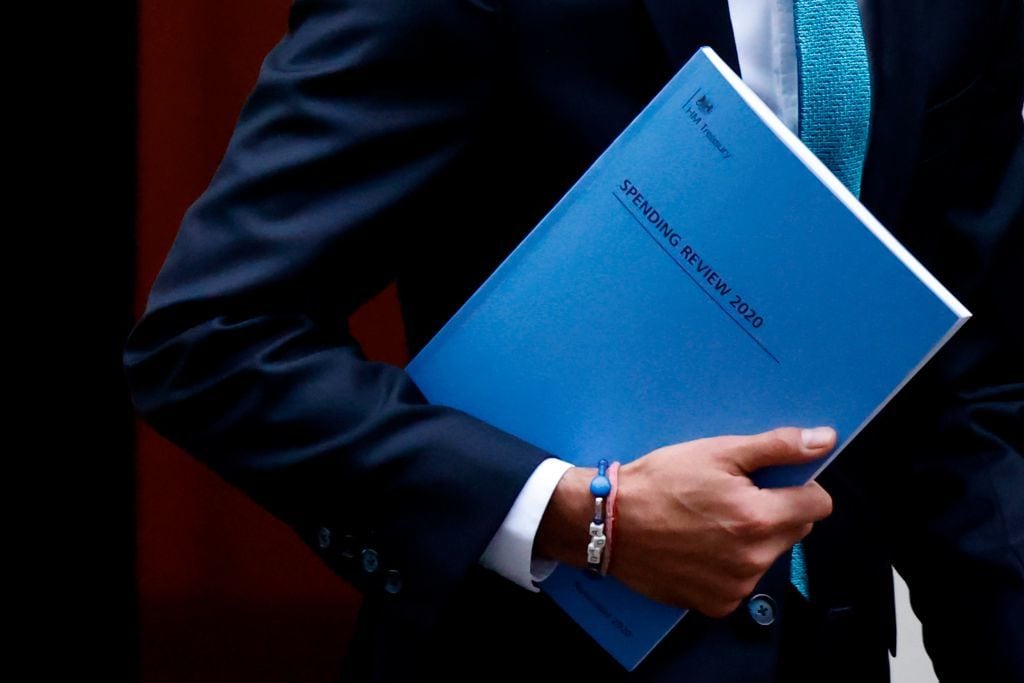Rishi Sunak’s spending review was a sobering assessment of not only the challenges facing the UK economy, but also the enormous economic damage created by the pandemic and the numerous lockdowns around the country, with the budget deficit for 2020 expected to come in at £394bn.
Chancellor's spending reviews sets aside $18bn
The chancellor said that the UK economy was likely to shrink by 11.3% this year, before rebounding 5.5% in 2021, and that’s always assuming any vaccine rollout programme next year goes smoothly. To that end, the chancellor set aside £18bn in respect of the virus and a vaccination programme.
Unemployment is expected to peak in the second quarter of 2021 at 7.5%, and the chancellor said that he would put aside £3bn to deliver a new 3-year restart programme for those longer-term unemployed, in order to try and get them back into work.
Spending review's contentious decisions
There were some contentious decisions in today’s spending review, notably the cut in the overseas aid budget to 0.5%, along with a pay freeze for public sector workers who earn more than £24,000 and don’t work in the health service; so doctors, nurses and health workers all get an increase.
The national living wage was also increased by 2.2% to £8.91 an hour, while the chancellor also announced a swathe of new capital spending of £100bn on the likes of housing, broadband, 5G, roads and cycle lanes. He also announced a £4bn levelling up fund for local projects in areas that have been left behind, and must have local consent. They must also be completed by the next UK general election.
What was a little surprising given the scale of today’s spending commitments, was the lack of detail in the spending review about additional support for businesses over the course of the next few months, so that they are able to cope with the tighter restrictions which are likely to be in place until next March.
There was also no mention as to how any of this would all be paid for, in terms of tax rises and spending cuts. This is certainly a valid criticism, however there appears to be far too much being made of this particular omission. This isn’t the time to be weighing down business and discouraging investment with talk of tax raids, tax rises and spending cuts. These will come in due course, but talking about them while the emergency is in full swing is neither wise or necessary.
Cost of debt more affordable than 2008
Yes, the sums being talked about are extraordinarily high, as is the size of the debt, however it is not as if we aren’t in the same situation as other countries, who face similar spending challenges over the next few years. The current level of the debt, while likely to move above 100% of GDP, is by no means the highest it’ s ever been. It was much higher during the second world war, however, as with all borrowing, the costs of it are probably more important than the size of it.
This is where we are in a much better place than 12 years ago, when UK gilt yields were over 5%. In 2008, there was huge concern about the high level of funding costs in terms of debt sustainability, which meant that the economic environment was very different. We even had the head of PIMCO, Bill Gross, warning that UK gilts were sitting on a bed of nitro-glycerine, and the IMF warning that the UK was playing with fire.
We are in a fundamentally different place now, notwithstanding that the UK’s average debt repayment profile is much longer than its peers at 10-15 years; UK 10-year gilts are now at 0.30%, while UK 30-year gilts are now at 0.86%. This is much more affordable than was the case 12 years ago, and while the rising level of debt is a worry, maybe it's also important to remember that while our debt to GDP ratio is on course to rise sharply above 100% of GDP, at least the situation is not as serious as in Japan, where it's over 250%, and who face similar challenges.
Disclaimer: CMC Markets is an execution-only service provider. The material (whether or not it states any opinions) is for general information purposes only, and does not take into account your personal circumstances or objectives. Nothing in this material is (or should be considered to be) financial, investment or other advice on which reliance should be placed. No opinion given in the material constitutes a recommendation by CMC Markets or the author that any particular investment, security, transaction or investment strategy is suitable for any specific person. The material has not been prepared in accordance with legal requirements designed to promote the independence of investment research. Although we are not specifically prevented from dealing before providing this material, we do not seek to take advantage of the material prior to its dissemination.






